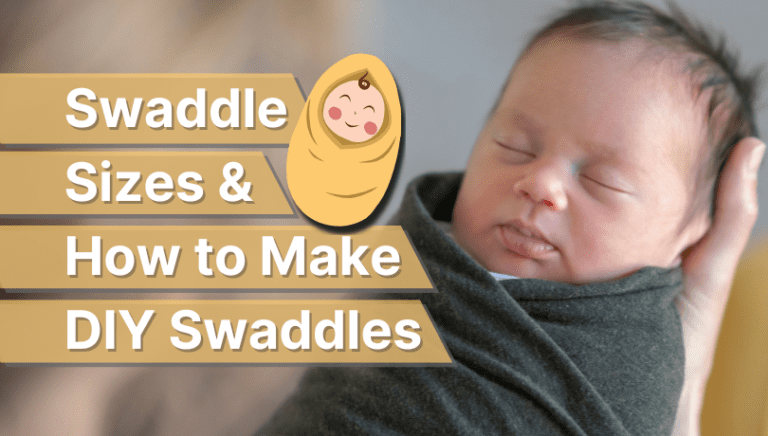How to Strengthen Baby’s Legs for Walking?
From rolling over, crawling, and sitting to standing up to walk, babies need good muscle strength in their legs and abdomen. For babies, these milestones are no less than an adventure!
When Teagan was born (my 4th child), she weighed only 4.4 lbs and had weak muscles. Seeing her signs of delay in walking independently (she was bending her legs while cruising and sometimes tiptoeing), we focused on a more nutritious diet and physical exercises to develop her leg strength. Finally, she started walking in the 21st month of age! Her hard work in strengthening her tiny feet paid off! I was so happy to see her progress.
Watching a child take their first steps is one of the most joyful moments for parents! It’s like children enter a new phase of life with a sense of freedom. But all this needs good muscle power, especially in the legs.
Many parents may be unaware of this. This is why I’ve covered some of the ways to strengthen your baby’s legs from my experience raising 6 kids of my own.
If your child is capable of walking early, has bowed legs, is walking on tiptoes, or shows a delay in walking, this guide will surely help you. I have shared the most useful leg-strengthening exercises and tips that can help your child walk with good muscle power and balance.
Stages of Walking Milestones:
Remember, every child is different, so the experiences in these walking stages may also vary.
- Crawling (6 to 9 months): Babies move their bellies using their arms, chest, back, and knees. They move forward or backward while kicking the floor underneath them.
- Pulling Up A Stand (7-9 months): After gaining control of sitting, babies start grabbing objects, pulling with their hands, and trying to stand on their own.
- Cruising (9-12 months): They take hold of a chair, sofa, bed, etc., for balancing and take a few steps.
- Standing and Walking (9-10 months and above): Finally, they start walking without any support. Their walk becomes well-balanced with time and consistency.
Also Read: How to Measure Shoe Size for Babies?

How to Strengthen Baby’s Legs for Walking? My Essential Tips
EVERY CHILD NEEDS A DIFFERENT PARENTING APPROACH! ♥️
The situation reversed with my first child, Avery. She was an active child! When she was 6 months old, her pediatrician told us that she could walk early. So, they asked us to incorporate a few exercises into her routine so she can adapt to walking faster.
This helped her build up her leg muscles. Guess what? She really started walking independently before her first birthday! Her wobbly cruising at the 8th month transformed into perfect walks at the 11th month.
Walking with perfect balance is one of the MOST ESSENTIAL gross motor skills in babies. Most children start walking between 9 and 18 months. This time is variable for each child.
The following tips might guide you to strengthen your baby’s legs for walking:
1. Bicycle Kicks:
I call it the ‘Grandma’s Method!’
It is ideal for babies above 2 months of age. Lay your little one down on a flat surface like a playmat, bed, etc. Hold both their legs in your hands and gently move their legs in a pedaling motion. You can do this in sets of forward and backward pedals.
This develops muscle power in the baby’s abdomen, thighs, and calf muscles. A muscle memory builds up with it, so the child naturally reflexes kicking and walking when the time comes. Also, babies suffering from colic, constipation, and gas get relief with this exercise.
2. Tummy Time:
Babies between 6 weeks and 3 months get the most benefits from tummy time. It develops strength in their arms, shoulders, legs, back, and abdomen. Baby’s neck control, fine motor skills for kicking, and back strength are enhanced in these sessions.
Lay your baby on their belly on a flat surface like a play mat, mattress, foam pillow, or blanket. You can try this on your lap or chest, too! When on the chest, keep a small pillow or fabric roll under the baby’s arms. Start with small sessions of 2-3 minutes throughout the day. Slowly increase this time to keep the consistency.

Some children may adapt to this exercise easily. Some might get fussy in the first few trials. So, GO SLOW AND ENCOURAGE YOUR LITTLE BUDDY WHENEVER NEEDED!
Talk with your baby to make them lift their head towards your voice. Keep a toy in front of the baby. They use their legs to kick towards the toy and their arms to grab it.
3. Using Play Gyms or Play Mats:
This is ideal for babies between 2 months and 2 years. Lay your baby on their back or tummy in a play gym. Let your baby kick the keyboard (the kick piano keyboard that is often attached to the baby play gym) at the base. The strength in the calf muscles, thighs, abdomen, and heels is improved through kicking. This helps develop the baby’s sensory and physical coordination while engaging with the keyboard.
Lying on the belly also provides active tummy time. The baby’s arms are strengthened while grabbing toys in the play gym.
4. Cruising And Kicking:
Once your child learns to cruise over your household furniture, you can start with indoor kicking sessions! This activity is super fun and engaging.
Stand your child at one end of your bed or sofa. You must stand or sit at the other end. Place a small, lightweight ball in their path. Call them to encourage them to cruise towards you.
As they cruise, tell them to kick the ball with one leg. Soon, the child understands the assignment and naturally kicks the ball. After some days, you can keep two balls for your baby to kick using each leg. In this way, each leg gets up in the air, which mimics the walking action. Baby’s calf muscles, knees, and thighs get trained during these sessions.
For early cruising babies, you can hold one hand while doing this exercise. This helps the child to balance their body weight. After a while, the child will automatically leave your hand and cruise independently to kick.
5. Squatting:
This is the best exercise for babies in the cruising phase. Stand your baby at one end of the sofa or bed. Keep a toy in the middle of your child’s path.
Encourage them to walk towards you and grab it. The baby will hold the sofa with one hand and cruise forward. They will squat down and grab the toy.
The buttock, leg, and thigh muscles get strengthened in this activity. The child also develops fine motor skills of wrists, hands, legs, and eyes while listening and following instructions.
6. Barefoot Play:
Whether it is indoors or outdoors, let your child stay barefoot as much as possible. You can do all these things in barefoot play:
- Take them to open gardens, beaches, or terrains where they can freely run or walk.
- Make them walk on a balance beam, wedges, or wood logs.
- You can go to indoor play courts where they can run, hop, or jump barefoot.
Give them a ball to kick, try taking a running race with other kids, or give them sensory toys to push beneath their feet.
The leg muscles and ligaments work more efficiently when the child is barefoot. This helps develop sensory reflexes in the child’s mind as they explore various textured surfaces with their feet.
The foot’s arch develops naturally, offering better balance and coordination.
This activity is also helpful if your child has conditions like:
- Walking on their toes
- Weak leg muscles (in cases like muscular dystrophy)
- Flat feet or club toes
Recommended Reading: When Should Baby Wear Shoes?
7. Leg Massage:
This was a part of my DAILY ROUTINE for my kids.
Baby leg massages enhance the muscle power for walking. It also improves blood circulation and muscle tone in the baby’s legs. Proper massages reduce the tension and strain in calf muscles, thighs, the Achilles tendon, heels, and toe balls.
- Apply a few drops of a gentle baby oil or lotion on your palms. It reduces the friction of the baby’s skin while massaging.
- Gently stroke your baby’s legs from thighs to toes. Keep the pressure low as the baby’s torso is sensitive.
- Slowly straighten your baby’s legs. Start squeezing from your baby’s buttocks to knees with a gentle pressure. This stimulates blood flow in the lateral areas of the thighs, especially in the Vastus lateralis and Rectus femoris.
- Use your thumbs to massage the baby’s knees and soles in a circular motion.
- Stroke gently from the knees to the ankles. Massage backward more to relax the calf muscles.
- Simultaneously, you can bend and extend your baby’s legs to increase flexibility and mobility.
- Stroke gently from the ankles to the tip of their toes to massage the Achilles tendon and heel balls.
- Add a little stretch while extending your child’s ankles and knees to release built-up tension in muscles.
- Don’t forget to rub your fingers between your baby’s toes to enhance blood flow.
Kelleigh’s Quick Tip: Observe your baby’s cues to know which massage process they like or dislike. Some babies may cry for the first time while being massaged as the muscle tension is released. Try singing songs or narrating stories to your little one to engage them while massaging.
You can watch this video for a more detailed understanding of baby leg massages
8. Weight-Bearing Activities:
As your child learns to cruise, hold their hand and take a walk with them. This gives them an overall idea of their body weight. Slowly, leave their hand and let them walk for a few steps alone. Initially, they may walk for 4-5 steps and sit on the floor.
Give them a small pillow or ball in their hand when they are standing. This helps them balance their body weight for longer. Now, call them to walk at you. They will develop fine motor skills to listen and walk towards your voice.
9. Push-Along Toys:
These toys give good support for babies while standing and walking. You can use these toys for babies who are cruising. They encourage walking and build muscle strength in the legs for stable walking. They help the baby with weight-shifting and promote motor development for taking balanced foot steps.
FAQ’s:
How do I know if my baby has weak legs?
If your baby is unable to stand on their two feet independently, it means that they might have weak legs. Such kids have low muscle mass, they sit down when support is removed, and they feel tiredness in their legs.
What is too late for a baby to walk?
If a baby above 18-20 months of age is not walking independently, it is considered late. It might happen due to low power in the legs, high body weight, or congenital disabilities.
What is the best exercise for a baby to walk?
Cruising, kicking, squatting, and barefoot play are the most effective exercises for babies to develop strong leg power for walking. Massaging your baby’s legs daily might add a complementary benefit to this.
Conclusion:
Each child takes their time to walk independently. The first few months need patience and extra care. As parents, we must look for our little ones’ cues and execute exercises accordingly.
I hope this guide has given you useful insights. I used these methods when my kids were small, and I got remarkable benefits from them. Whether it is tummy time, push-along toys, play mats, or barefoot play, always attend to your child and cater to their walking needs. Seek medical help if all these methods are ineffective for your little buddy.
Most importantly, we must offer lots of LOVE AND ENCOURAGEMENT to our baby to boost their willpower and confidence for walking! Which method do you prefer? Please let me know in the comments!
And, enjoy these parenting days as much as you can; they won’t come back! ♥️






